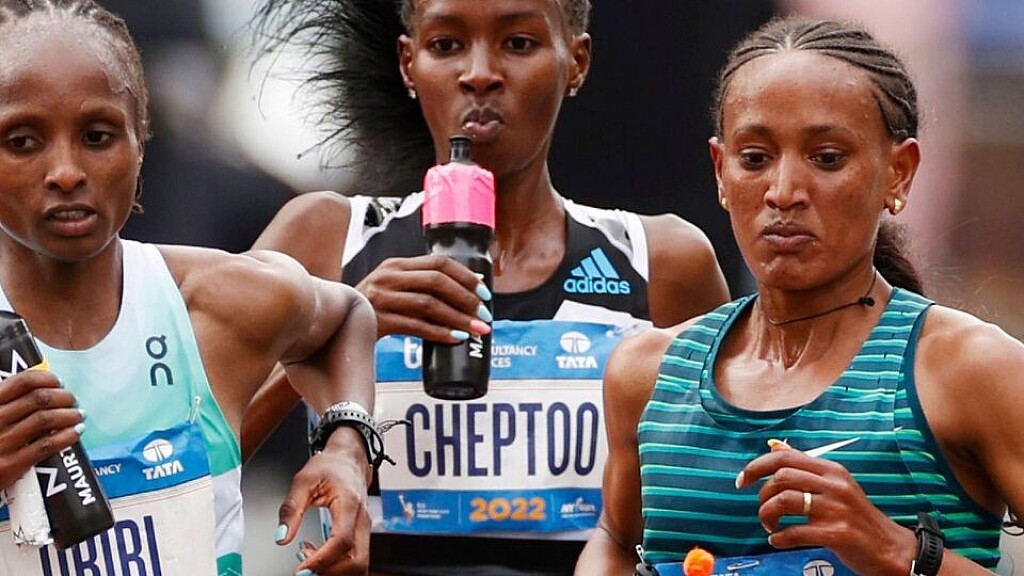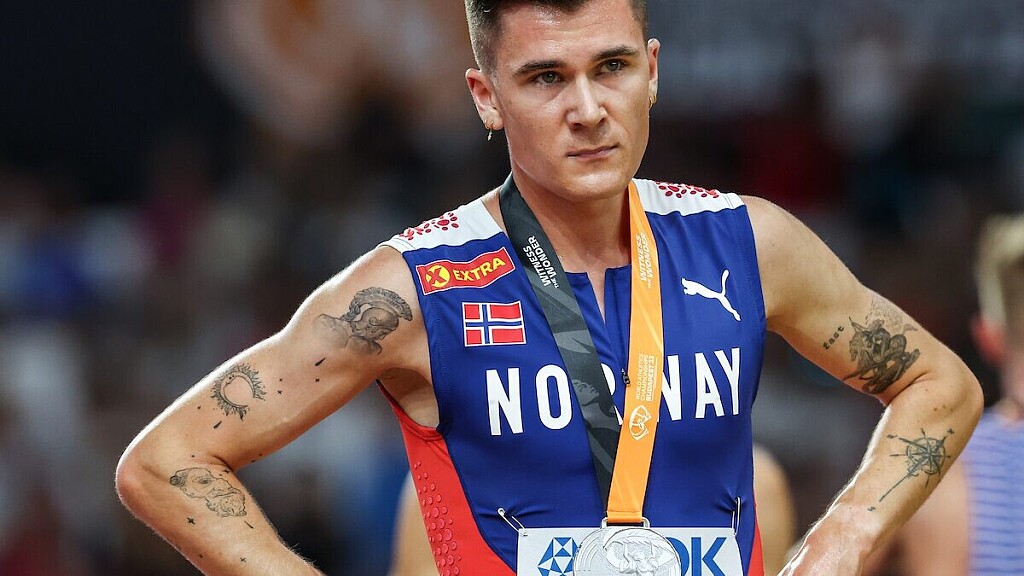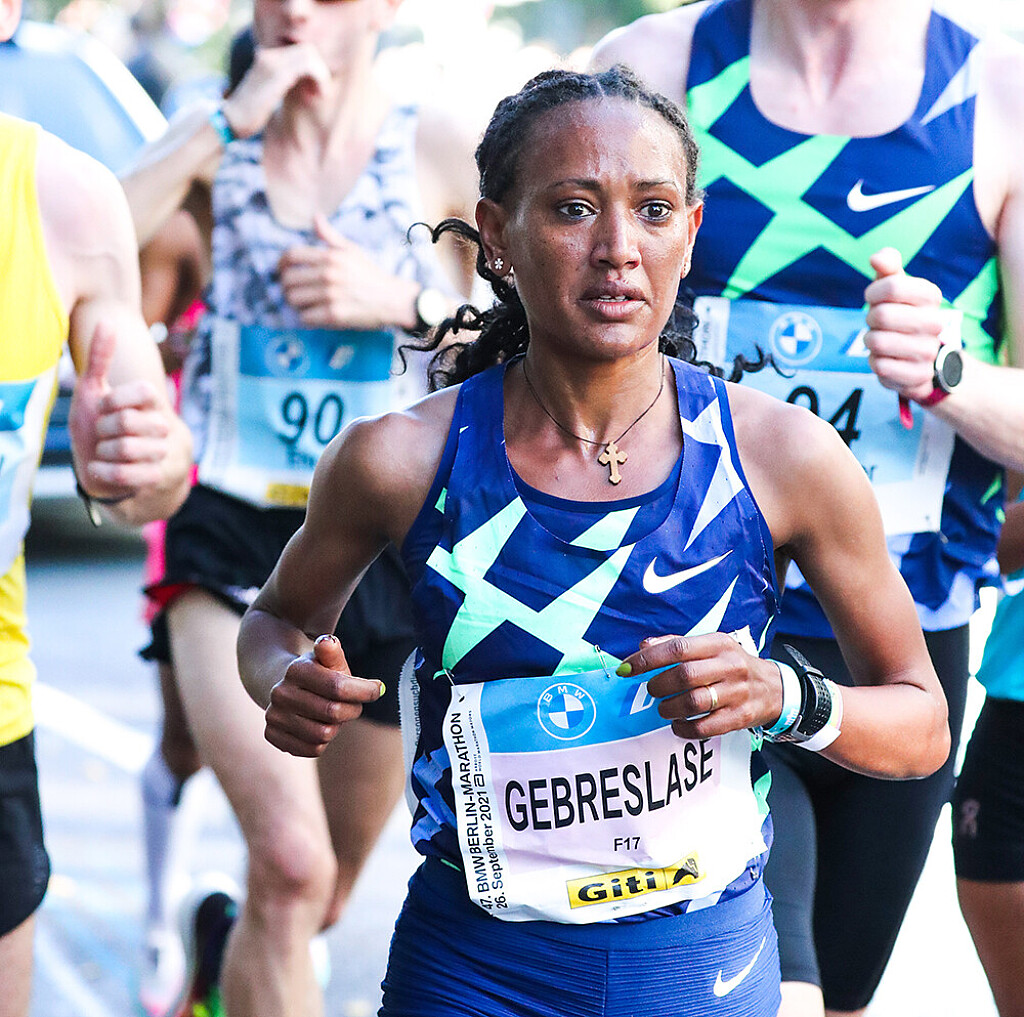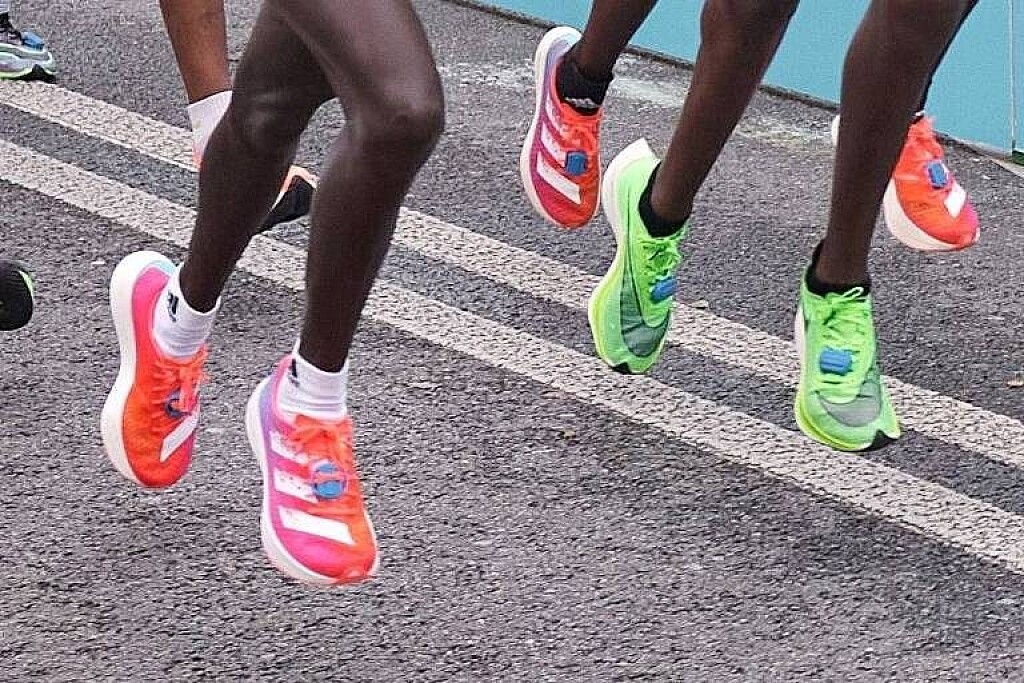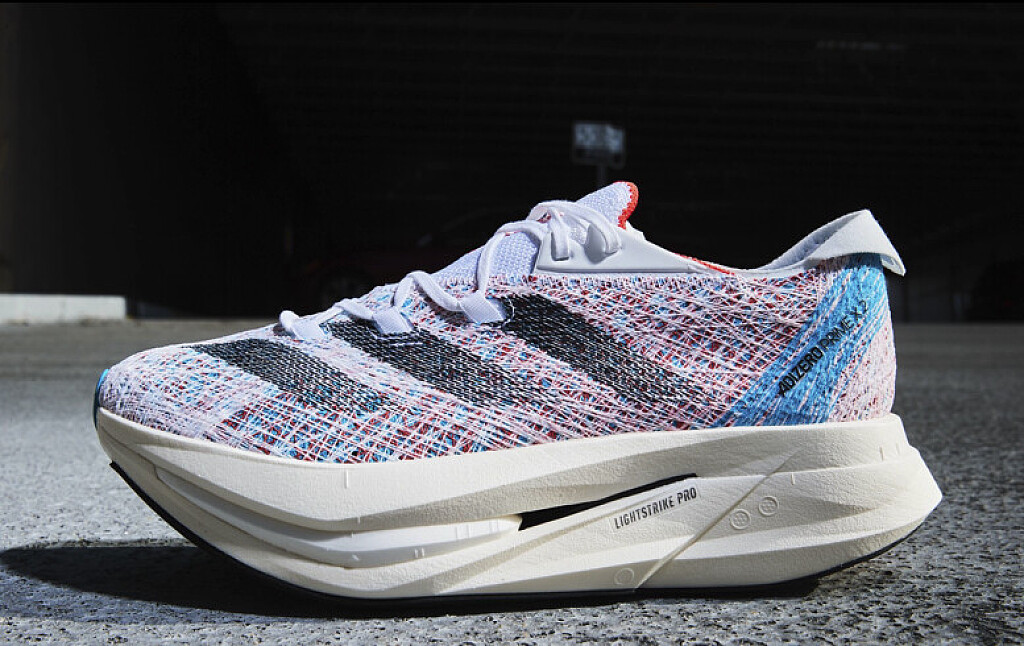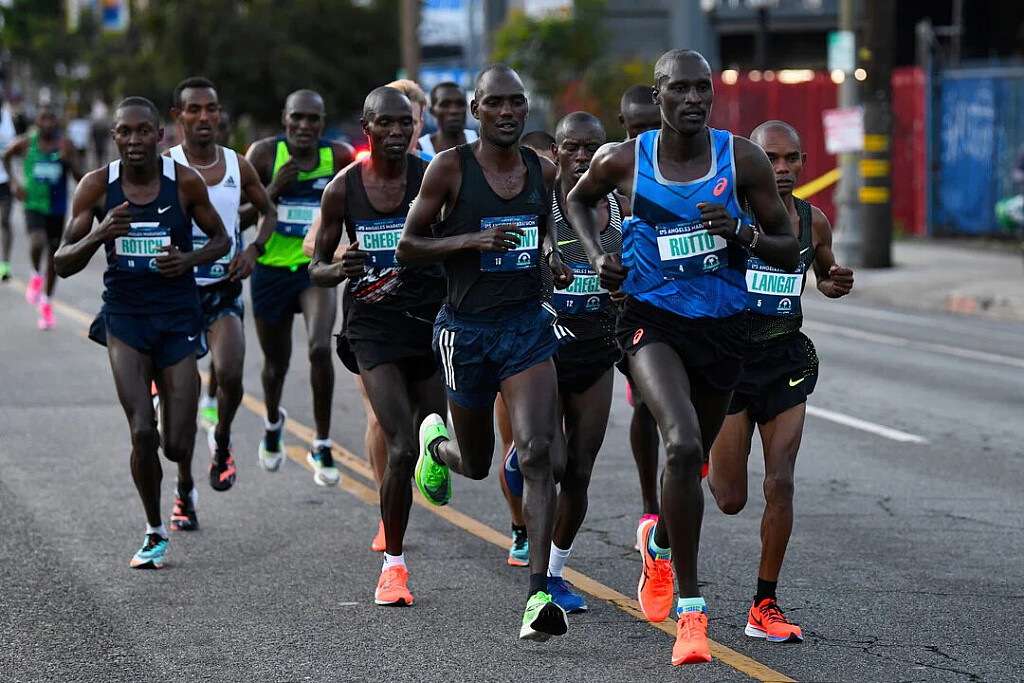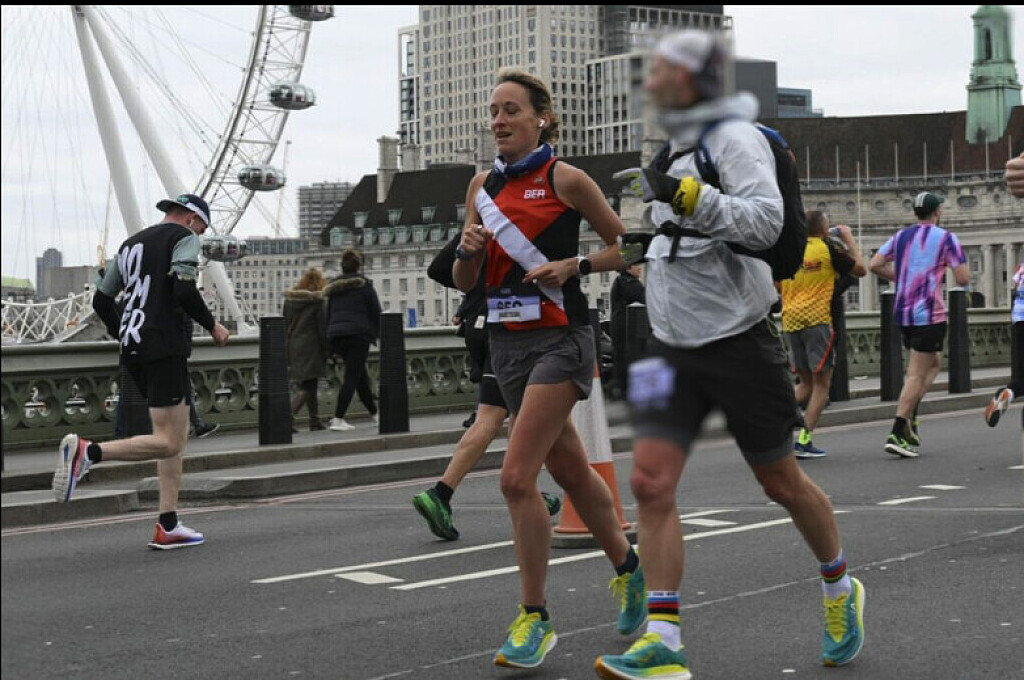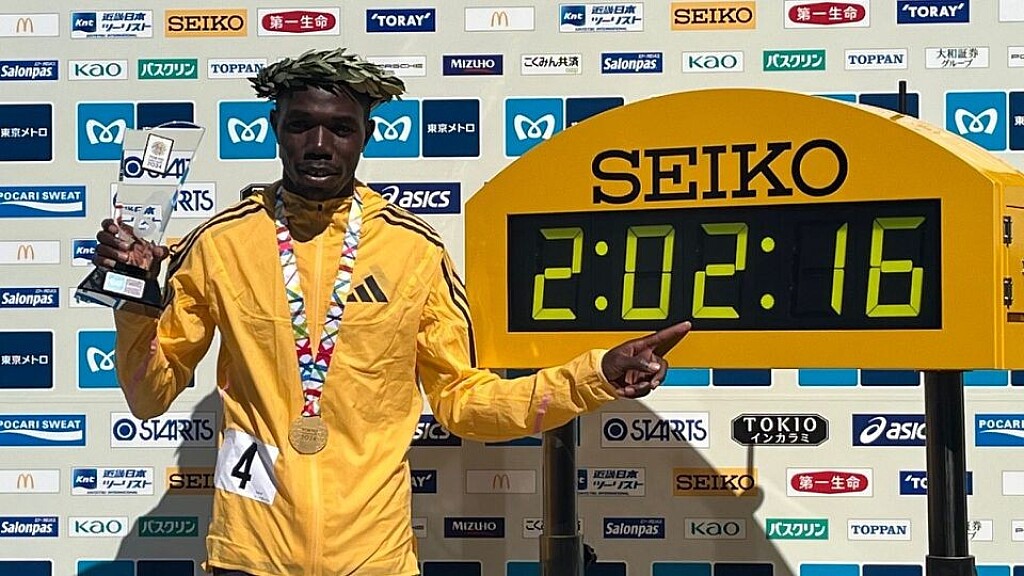Running News Daily
Top Ten Stories of the Week
3/16/2024
These are the top ten stories based on views over the last week.
Nagoya Women's Marathon winner to pocket Ksh 35 million
The Nagoya Women's Marathon will be coming up on Sunday offering the highest prize money with the winner set to walk away with Ksh 35 million ($241,500US).
The 2024 Nagoya Women’s Marathon is certainly one of the marathons in the world that offers the highest prize money.
The winner of the race will walk away with more than Ksh 35 million with every finisher also being awarded a beautiful, specially designed pendant from a global luxury jeweller, Tiffany & Co., as a memento of their achievement.
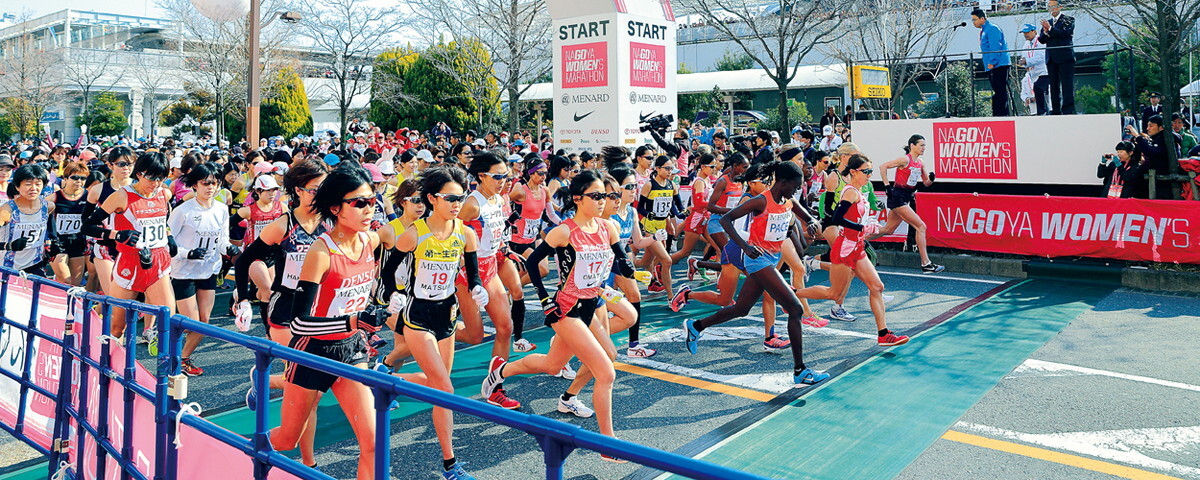
As per the race organisers, the prize money for the subsequent places will be determined separately based on the competition results.
Meanwhile, this year’s field has attracted Gotytom Gebreslase who will have the course record in her sights when she races in the marathon, a World Athletics Platinum Label road race.

The 2022 world champion set her Personal Best time of 2:18:11 when winning that title in Oregon and she went on to secure silver at last year’s World Championships in Budapest.
This will be the Ethiopian’s first marathon since then and she goes into it targeting at least a lifetime best, if not the course record of 2:17:18 set by Kenya’s Ruth Chepngetich in 2022 – that time being the second-fastest-ever women-only marathon behind the 2:17:01 run by Mary Keitany in London in 2017.
“My goal for Sunday is to run under 2 hours and 18 minutes, and if the weather and pacemakers are good, I will try to break the course record of 2:17:18,” she said at the pre-event press conference.
She will face a stern test from Bahrain’s Eunice Chebichii Chumba, who finished seventh in the Olympic Games marathon in Sapporo, and Romania’s Delvine Relin Meringor who ran her national record of 2:20:49 when finishing third in Barcelona a year ago and she went on to place 12th in the Berlin Marathon in 2:23:25.
Violah Cheptoo will be Kenya’s sole representative in the race, hoping to retain the title that was won by Chepng’etich during last year’s edition of the race.
(03/09/24) Views: 145Abigael Wuafula
Jakob Ingebrigtsen thinks doping is worse now than 10 years ago
Norway’s gold drought at the World Indoor Championships hit 29 years last weekend in Glasgow, with the country’s star middle-distance runner, Jakob Ingebrigtsen, sidelined by injury. In a recent interview with the Times, Ingebrigtsen did not hold back, slamming doping in athletics, saying it’s worse now than a decade ago.
“I think doping is worse now than 10 years ago,” Ingebrigtsen told the Times. “It is difficult to prove that, but it’s what I feel. The problem now is that we see fewer positive tests, and that really concerns me; it is a sign that people are getting smarter and finding better ways to evade detection, or perhaps the tests are not detecting enough.”
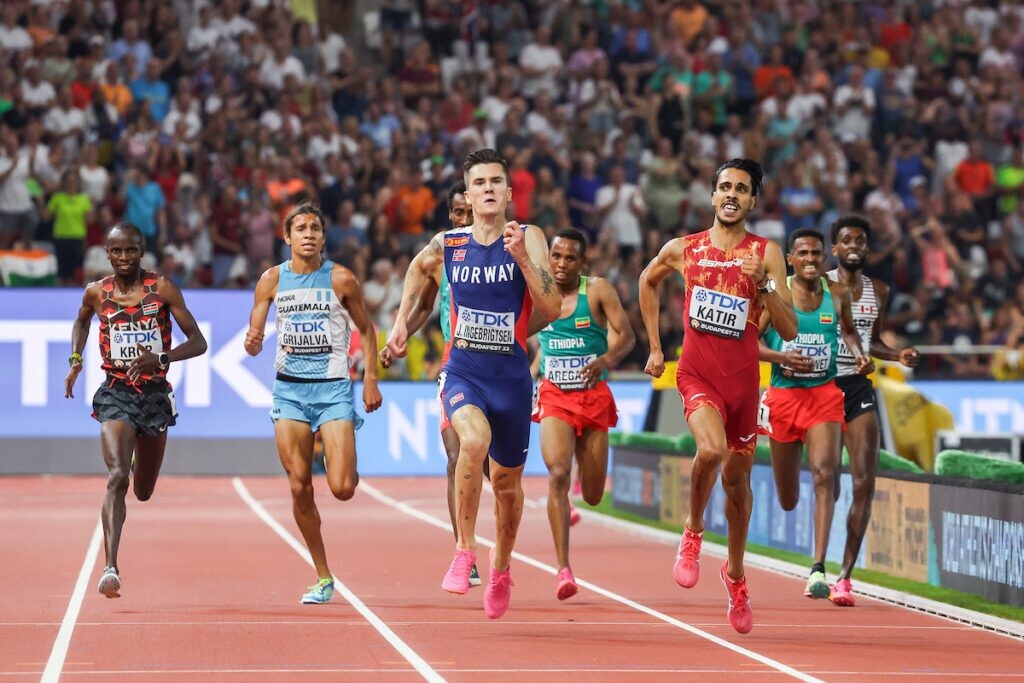
The Olympic 1,500m champion went on to say that not enough people are getting caught by regular testing, and the only way “cheats” are detected is through whereabouts (three missed doping tests in 12 months). “If you know what you’re doing, that is a genius way of cheating,” he says.
One thing that is different than 10 years ago is the number of athletes tested. World Athletics president Sebastian Coe introduced the Athletics Integrity Unit (AIU) in 2017, a crucial governing body dedicated to safeguarding the integrity of athletics. Each year, World Athletics spends an estimated $8,000,000 putting systems in place to tackle doping.
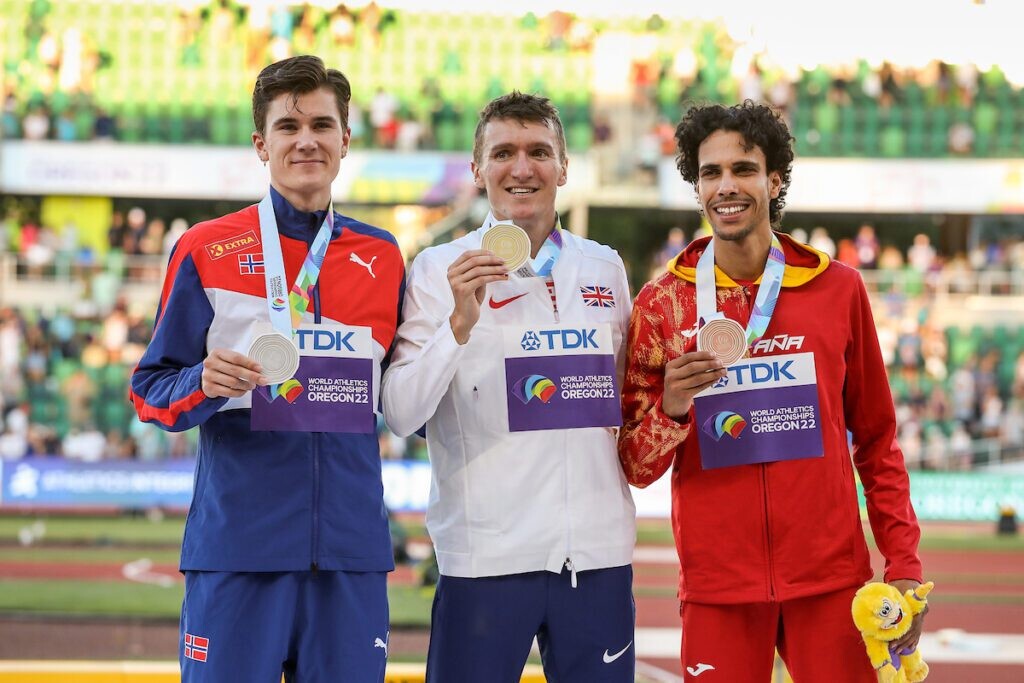
Ingebrigtsen voiced his satisfaction in beating suspected dopers, like two-time world championship medalist Mohamed Katir, who was given a two-year ban on whereabouts in February. “It’s the ultimate destruction,” he said to the Times. “It’s more embarrassing for them—even when they have the audacity to cheat, and they are not doing it right.”
The 23-year-old has yet to race in the 2024 season, as he continues to recover from an Achilles injury he suffered last fall. He expects to make his debut on the track in late May and round into form to compete at the 2024 European Championships in Rome in June.
(03/09/24) Views: 133Marley Dickinson
Gotytom Gebreslase hopes to break Nahoya course record
In advance of the highly anticipated race scheduled for this Sunday, March 10, 2024, the Nagoya Women’s Marathon held a pre-race press conference for the invited elite athletes today in Nagoya, Japan.
Gotytom Gebreslase (ETH), 2022 Oregon World Champion and 2023 Budapest World Championships silver medalist said, “My goal for Sunday is to run under two hours 18 minutes, and if the weather and pacemakers are good, I will try to break the course record of 2:17:18.” Her competitor Eunice Chebichii Chumba of Bahrain, 2023 Asian Games Champion said, “My preparation has been going well, and my focus will be to improve my personal best of 2:20:02.”
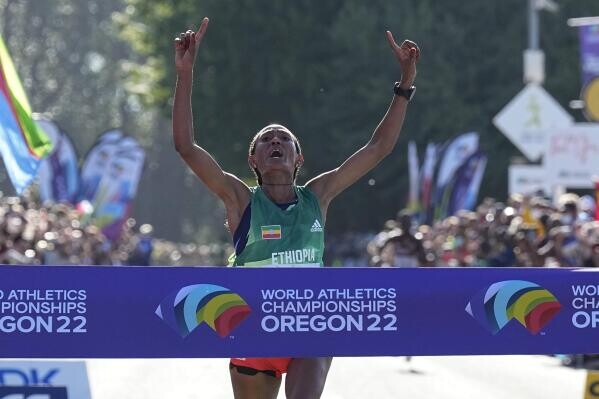
For Japanese athletes, the Nagoya Women’s Marathon 2024 will be the last chance to win a place in the Paris Olympics team by beating the new national record of 2:18:59 just set by Honami Maeda this January.
The 2020 Tokyo Olympians Ayuko Suzuki will aim to break the target of 2:18:59 so she can compete in the Olympics again to show what she really can do, adding that she was ready to turn the support of the local spectators of her hometown Aichi into strength. Sharing the same goal with Ayuko, Rika Kaseda commented that she had prepared for a high-speed race and would challenge herself to keep up with the pace of other fast athletes to grab the last ticket for Paris 2024.
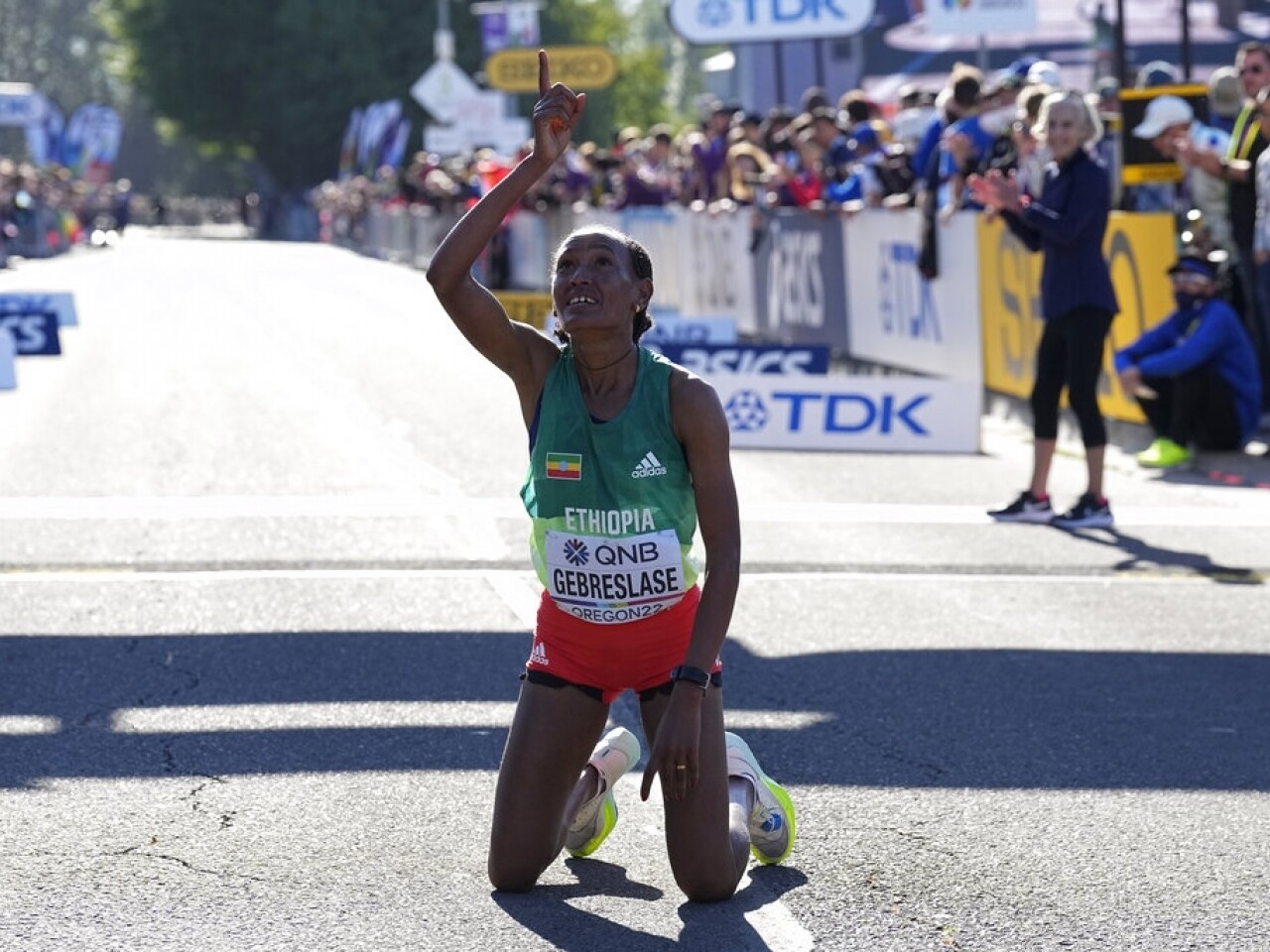
In addition to these top elite athletes, many recreational runners will join the Nagoya Women’s Marathon 2024 from home and abroad, making it an exciting race with 18,000 participants. All finishers will be presented with an event’s exclusively designed Tiffany & Co. pendant and a New Balance T-shirt as the finisher prize.
Sunday’s race will be streamed live free of charge to 37 countries and regions (Argentina, Australia, Bahrain, Brazil, Brunei, Cambodia, Chile, Colombia, Egypt, Ethiopia, France, Germany, Hong Kong, Indonesia, Israel, Italy, Kenya, Macau, Malaysia, Mexico, Monaco, Myanmar, Namibia, Netherlands, New Zealand, Papua New Guinea, Philippines, Puerto Rico, Romania, Singapore, South Africa, South Korea, Spain, Taiwan, Thailand, United Kingdom, and United States of America) on the race’s official website at https://womens-marathon.nagoya/en/broadcast.php. Stay tuned for the race to start at 9:10 a.m. on Sunday, March 10, 2024, Japan time.
(03/08/24) Views: 128AIMS
Ando achieves first career marathon victory in Nagoya
Yuka Ando became the first Japanese winner in three years at the Nagoya Women’s Marathon, taking the title in a PB of 2:21:19 at the World Athletics Platinum Label road race on Sunday (10).
Before today, Ando had completed 10 marathons in her career, and had reached the podium in Nagoya on three previous occasions. But today’s performance marked the first marathon victory of her career.
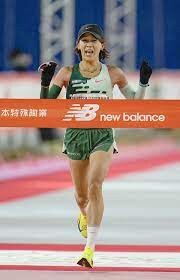
After a chilly start with temperatures of about 5C, Ando and fellow Japanese duo Ayuko Suzuki and Rika Kaseda formed aleading pack alongside 2022 world champion Gotytom Gebreslase of Ethiopia and Asian champion Eunice Chebichii Chumba of Bahrain.
The lead group reached the halfway point in 1:09:56, inside 2:20 pace, but the tempo dropped slightly in the second half. Chumba and Gebreslase opened up a bit of a gap on the leading Japanese contenders. Suzuki started to fall back as Ando and Kaseda ran side by side as they tried to chase the leaders.
Gebreslase dropped out at about 36km, leaving Chumba in front. Ando caught up with the leader at about 39km and they ran together for a couple of kilometres before Ando kicked ahead in the final 800 metres.
Ando went on to cross the line in 2:21:18, consolidating her position at eighth on the Japanese all-time list. Chumba finished second in 2:21:25, and Suzuki placed third in a PB of 2:21:33.
Ando, who would have had to have broken the Asian record of 2:18:59 to make it on to Japan’s team for the Paris Olympics, was delighted with her run.
“There are many people who have helped me to get this far, and I’m filled with gratitude,” she said. “I can’t go to Paris, but I’m really happy that I won. It was really hard when I fell behind the lead pack, but I was able to catch up by running, only focusing on going forward.”
(03/10/24) Views: 124Dr. Kris Sheppard explains how your shoe may be helping–or hindering–your stride
Shoe offset, also known as heel drop, refers to the difference in height between the heel and forefoot of a running shoe. This feature influences a runner’s stride and can have implications for injury susceptibility. We spoke to Dr. Kris Sheppard, a chiropractor at the Runner’s Academy in Toronto, to understand how the heel drop in your shoe may be impacting your running.
How does shoe offset affect running stride?
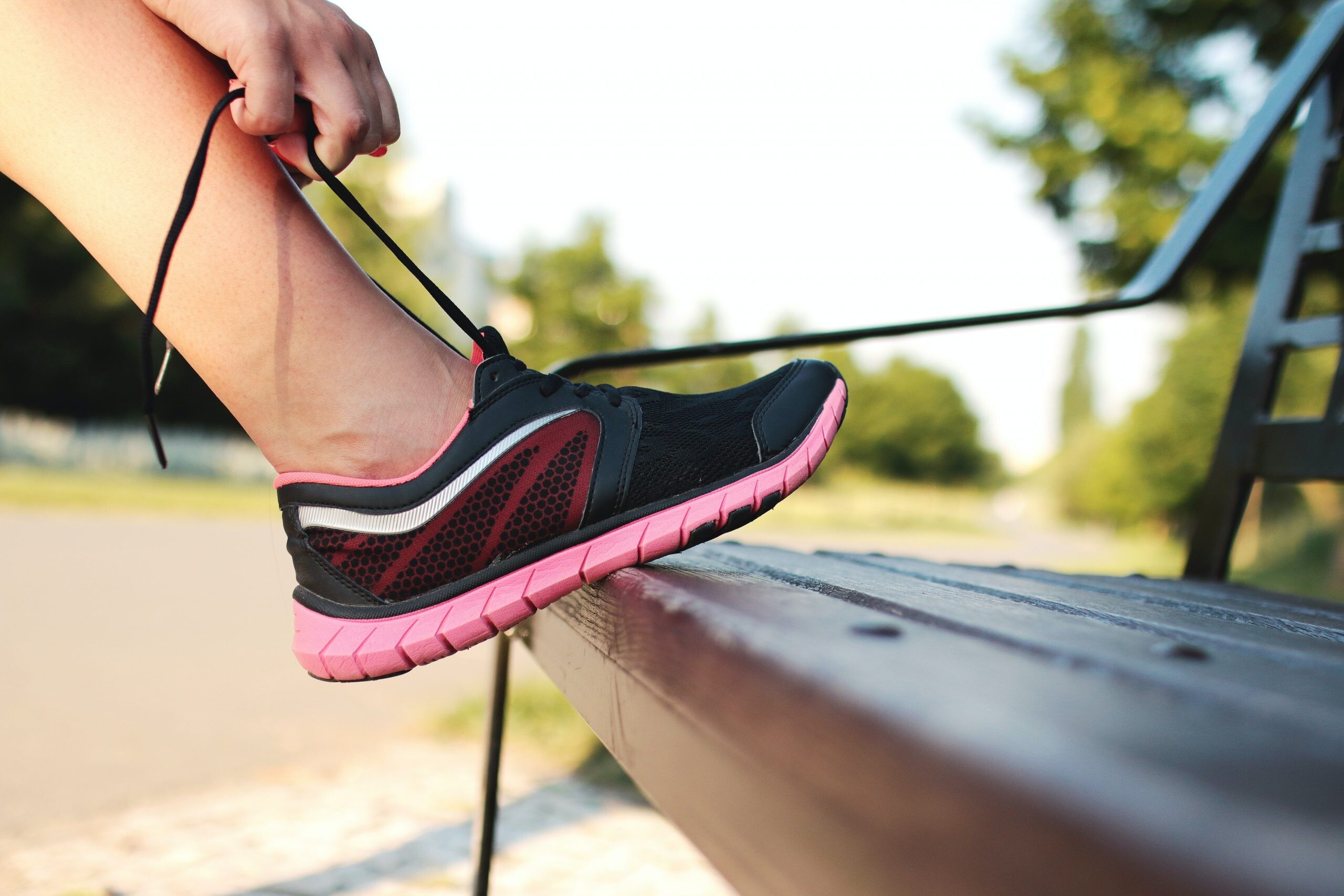
Low-drop shoes may have a drop of between 0 mm and 6 mm, whereas a higher-drop shoe will generally be between 8 mm and 12 mm. Sheppard explains that a lower heel-toe drop in running shoes can decrease inward knee motion (knee adduction), which has been associated with knee and hip issues in running. A lower drop can also reduce load at the patellar femoral joint (knee joint) by approximately 30 per cent.
“Some studies have shown that zero-drop shoes can encourage a midfoot strike, which was once considered to be protective overall,” says Sheppard. “And a midfoot strike can also help reduce forces on the patellar femoral joint.”

During the minimalist shoe trend, it was believed that lower-drop shoes were superior, however recent research suggests otherwise.
Is heel-striking bad?
Some experts suggest that higher-drop shoes encourage heel striking, which is thought to be “bad.” But Sheppard points out that heel striking is not actually the problem; the problem is that it usually leads to overstriding. More on that in a minute.
“Lower [drop] shoes have been shown to encourage a midfoot strike rather than a heel strike,” says Sheppard. “It is important to note that heel striking does not necessarily equate to overstriding. Interestingly, research has shown that the majority of runners, including elite runners like [former marathon world record holder Eliud] Kipchoge, actually land with their rear foot.”
Overstriding occurs when the foot and ankle land in front of the knee, rather than directly under the knee with the shin in a vertical position. “Imagine landing on a trampoline with your foot and ankle in front of your knee; this would result in a rebound backwards, regardless of the foot strike pattern,” he says. Over-striding increases horizontal braking forces in the body, which has been shown to increase the risk of injury–as well as slowing runners down.
It is worth mentioning that the new “super shoes” with carbon and spring-type components work with the heel-toe offset to drive runners faster and more efficiently toward the big toe, but this is only effective if landing on the rear foot.
Is a higher or lower offset better for your Achilles tendons?
“Contrary to common belief, a higher drop does not increase the risk of Achilles tendon injury,” says Sheppard. “In fact, a higher drop has been shown to help with Achilles tendon pain.”
However, the body’s tissues adapt to the way they have been loaded. If a runner has always been using a higher drop shoe and suddenly switches to a lower offset, the tissues are at greater risk of injury. To mitigate this risk, a gradual transition is recommended. For example, a small change of 2 mm can be made over a period of six months by incorporating low-offset shoes into training cycles once or twice a week. This strategy can help adapt the tendons to a lower drop and reduce the risk of injury.
Should runners buy high or low-offset shoes? Are some runners better suited to one or the other?
“In general, it is not recommended to make drastic changes in the drop of the shoe you have been consistently using if it has been working well for you,” says Sheppard. “However, if a runner is prone to knee pain, a shoe with a lower shoe may be beneficial.” This means that if you buy a new shoe you haven’t worn before, make sure the new shoe’s drop isn’t significantly lower than what you’re used to–or if it is, incorporate it into your routine gradually to avoid injury.
On the other hand, Sheppard notes that if someone is susceptible to Achilles tendon issues, a higher drop may be more suitable. He adds again that making significant changes in shoe offset can increase the risk of injury, so it is important to proceed with caution and consider personal factors and injury history when selecting running shoes.
(03/08/24) Views: 120Brittany Hambleton
Rise of the “Illegal” Running Shoes
Super trainers are fast, fun, and maybe a little risky. Here’s what to know about these max-cushioned shoes.
Banned shoes emerged courtside long before they found their way onto a marathon course. Legend has it that nearly 40 years ago, Michael Jordan laced up a pair of red-and-black high-tops in violation of the NBA’s approved uniform colors.
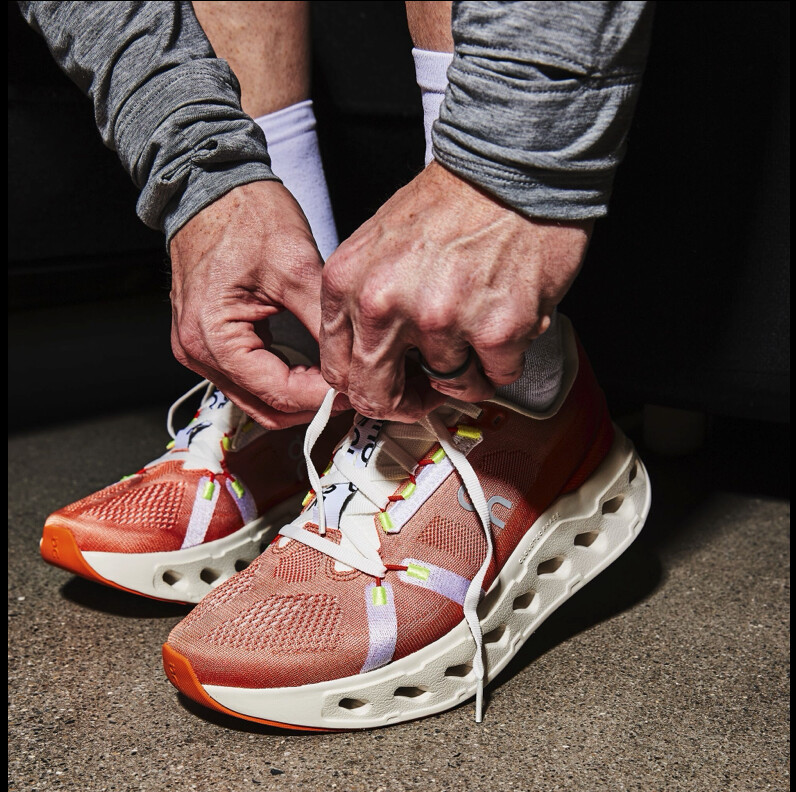
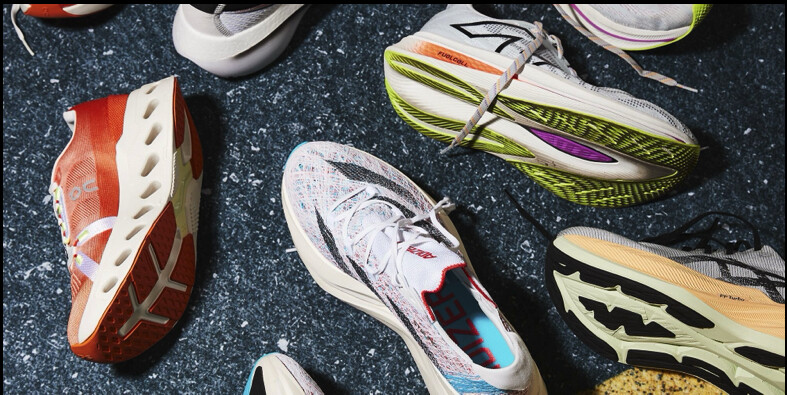
In 2010, the league cracked down again—this time, for reasons besides aesthetics—on a pair of basketball shoes that were shown to increase a player’s vertical-jump height. Today, Nike’s Air Jordan brand is a household name and multibillion-dollar business, and shoemaker Athletic Propulsion Labs (APL) has since released additional banned styles (Superfuture and Concept X) of its performance-boosting kicks.
Though some speculate these bans were mostly crafty marketing, the same can’t be said about the wave of “illegal” shoes that is flooding the roadways on the feet of runners. Super shoes have proven a true performance boon to both elites and recreational runners on race day. Now the tech has trickled down to shoes for daily runs, ushering in super-thick, though still permissible, shoes that have created their own category: super trainers.
What Is a Super Trainer?
Technically, a formal definition doesn’t exist. But we’ll establish some general parameters.
Super trainers share many of the same qualities as super shoes built for race day: a tall stack height, efficient midsole geometry, high-powered super foam, and usually some sort of plate. But these trainers aren’t meant for racing, like a Nike Vaporfly or Saucony Endorphin Elite—they’re designed for everyday mileage.
Super shoes for racing have to balance cushioning and propulsion, but still be lightweight. Super trainers, though, can have beefier constructions that help to extend their life spans. For example, shoe brand On guarantees only four marathons from the Cloudboom Echo 3—that’s little more than 100 miles. Super trainers can handle more mileage, and should have the typical 300- to 500-mile range of a normal running shoe.
To do that, they may have more outsole rubber for durability. Their uppers are usually softer and thicker than a racing shoe’s, as well, with comfortably cushioned ankle collars and tongues. They tie up with sturdier laces and offer a more forgiving fit overall, closer to what you’d expect from a workhorse daily trainer. And, since super trainers aren’t made to toe a starting line, brands can pile on midsole foam in excess of the 40mm limit imposed by World Athletics.
But they’re more than just extremely cushioned running shoes. Super trainers have additional mechanisms and “super foams” geared toward running efficiency and energy return, explained below.
Anatomy of a Super Trainer
If we break down a super trainer into its key components, we see a recurring theme: a stack of super foam in the ballpark of 40mm (or more), a carefully sculpted midsole shape for propulsion, and a plate that harnesses those pieces and holds it all together. This is the tech that puts the “super” in super trainers; it needs to interact with the foot and the rest of the kinetic chain in specific ways to deliver the intended ride and energy return.
Here’s what’s happening inside the midsole under your foot, and how these elements work to boost your stride.
1. Rocker Geometry
When we talk about a rocker sole, we’re describing the curvature of the bottom of the shoe’s sole. Both the heel and the toe curve upward, away from the ground, to give the shoe a more rounded base. The result is a shape like that you’ll find on a rocking chair. This is needed because the shoes are so thick, they don’t bend under the forefoot for a smooth transition during your gait cycle.
Shoe developers can also manipulate the inflection points of the rockers around a runner’s pace and foot strike to potentially manipulate transition time. Usually, you’ll find the most aggressive rocker designs in racing shoes. Still, pronounced rocker soles on super trainers are essential to make transitions comfortable.
→ How do rocker soles work?
Rocker soles in shoes function to mimic the natural rockers of the foot to make us feel more efficient. The foot has three functional rockers—the heel (first), ankle (second), and forefoot (third)—that we use while walking and running. The heel bevel in a shoe prepares the foot to contact the ground and smooths out the shoe’s ride when you land. Forefoot rockers assist movement during toe-off, which generally means the toes and ankle joint don’t have to work as hard.
For some runners, a stiff rocker sole can decrease demand on the calves by transitioning effort upward to the knee and hips. A runner’s experience will depend on their specific biomechanics, where the rocker is placed, and how their footstrike contacts it.
2. Super Foam
Polyether Block Amide, or PEBA, is a common foam compound for super trainer midsoles. (A popular trade name for the material is Pebax, made by a company called Arkema.) It’s the basis for foams like Nike ZoomX, Saucony Pwrrun PB, Puma Nitrofoam, and Asics FF Blast Turbo. Many of those brands leverage the same foam used in their top-tier racing shoes for their super trainer models.
Right now, PEBA-based foams lead the way for energy return. While current research and our own testing indicates that supercritical EVA and TPU blends are also impressive, PEBA has the edge more often than not. Why? It’s lighter than TPU and far softer and bouncier than supercritical EVA. Some iterations are firmer than others, depending on which brand’s flavor you try.
→ How does foam work?
Cushioning serves to absorb shock upon landing and provide overall comfort while running, but it can also return energy to the runner and stabilize the shoe. PEBA foams are especially lightweight, so brands can pile it on—both in thickness and in width—without the same weight penalty applied when using EVA or TPU materials. The additional width is just as important as the height. These shoes often need a wide platform of midsole material to remain stable.
Every brand’s PEBA-based foam compresses at a different rate, with varying amounts of responsiveness, so each offers a unique benefit based on the runner. For example, runners who land with lots of force can bottom out and crush a foam that’s too squishy, so they may prefer a firmer platform. A harder midsole can offer more support without any additional stability elements. On the other hand, a softer foam can provide more comfort, and research suggests that it may have a protective benefit for lighter runners.
Keep in mind that dozens of pieces within a shoe, as well as countless runner-specific characteristics, come together alongside a super foam to deliver its specific ride and response. It’s not always possible to parse each element individually.
3. Plates
Not every super trainer has a plate in its midsole, but it’s increasingly common. That’s because—regardless of whether it’s made from TPU, EVA, PEBA, carbon fiber, or a mix—a plate stiffens the midsole and can add support. It may also give the ride some extra pop, but it largely functions to stabilize the shoe. The Adidas Adizero Prime X 2 Strung, which has a heel stack height of 50mm, requires two stiff carbon-infused plates.
Some shoes need less support and utilize pliable materials with thinner rod constructions or forgo full-length plates for ones that extend only halfway along the midsole.
→ How do midsole plates work?
While plates can add propulsion, research suggests that the true hero is the foam itself. A plate mostly serves to “facilitate motion and add stiffness to the sole to balance out the softer compliant foams,” says Matt Klein, DPT and founder of the Doctors of Running website and podcast.
He explains that the effects of stiff-plated shoes are not clear-cut. “Everything we know [about super trainers] is applied from super shoe and maximal shoe research. These shoes shift work up to the knees and hips. The ankles may do less, but that doesn’t always apply. If the shoe is too stiff, the ankles will actually end up doing more work. But once a midsole gets so thick, it may not need a plate; the amount of material naturally stiffens the ride.”
What Are the Benefits of Super Trainers?
Simply put, these shoes are so much fun to run in. They can lend a bounce to your stride that feels like bounding on a trampoline. And since the springy sensation and high energy return can help you move more efficiently, running fast feels easier.
Plus, a review of 63 research studies concluded that these trainers can also help attenuate shock and dampen some of the hard impacts from training. So, runners recover from hard efforts more quickly; they’ll lace up the next day feeling fresher and less sore than if they’d worn regular running shoes. And for those eager to increase mileage, this may allow some runners to increase their weekly workload with less fatigue and fewer aches and pains.
“These have the benefit of having similarities to super racing shoes. These shoe types certainly increase the capacity of work you can do, so I suspect those running higher miles will probably benefit most from these,” Klein speculates.
But, the recovery boost from super trainers can make it tempting to tack on too many miles too soon or overcook the pace on easy days. “Just because you are less sore does not mean you are at a lower risk for injury. You can still get injured with overdoing things,” Klein says.
Our wear-testers report that they’re able to run faster paces with less effort in super trainers, but it’s still important to keep easy jogs relaxed. Double-check your training log and pull back on the reins if you notice spikes in mileage or intensity outside your typical training volume.
Are There Any Risks to Super Trainers?
Though they feel great, super trainers can have an impact on our natural gaits and biomechanics. “One of the injury risks for this shoe type is that it is so different from normal mechanics and footwear. The current evidence from super shoes and super-max stack-height shoes is that we tend to stiffen our legs in taller, softer shoes,” Klein says. “This is not bad short-term, but some evidence suggests long-term super-max stack-height shoes can actually increase joint loading due to that stiffening.”
“I suspect running in them a ton will cause less joint motion, as the body will stiffen up to find stability as shock absorption isn’t needed. This may be great for a recovery run/faster run, but trying to transition back to normal shoes can take time if you only run in these and super racing shoes.” Klein recommends making the transition slowly to avoid injury and keeping more than one pair of running shoes in your rotation.
“I do suspect that with the workload being shifted up to the knee and especially the hip, there may be an increase in injuries in those areas. The hip still has to work harder being on a softer, less stable surface. So, those with hip instability and strength issues may want to avoid super shoes, at least until these issues have been addressed,” Klein says. New runners should focus on building strength and experience before experimenting with super trainers.
There is little doubt that these shoes have effects at the point where our feet meet the midsoles as well as farther along our kinetic chains. Super trainers shift more of the workload of running to the hamstrings, which means that you won’t engage the calves and lower leg muscles as much. Moving some of that effort to larger muscle groups can be beneficial for some runners, like those who are struggling with calf or Achilles tendon injuries. But those who have a nagging hamstring strain may need to be wary. Whether or not it’s your goal, those upper leg muscles will receive more of a workout.
At the very least, one thing can be said for sure. It’s that all the foam underfoot is going to put a lot of distance between your foot and the ground. This limits the amount of ground feel you receive from the shoe. It can be easier to wipe out if you’re hopping a curb on a night run. And on rain-slicked sidewalks or technical trails, it can be tough to steer a thick and bulky midsole. If you’re prone to ankle rolls or need a keen sense of where and how your foot is landing whenever you touch down, a super trainer might not serve you well.
Will I Really Get DQ’d in a Race?
It depends. If you’re an elite runner, absolutely. But if you’re going for a 3:10 BQ, it’s unlikely. Ethiopian runner Derara Hurisa won the 2021 Vienna Marathon in 2:09:22 but was disqualified when race organizers found he’d raced in the Adidas Adizero Prime X, a different shoe than he’d declared on his prerace form. Another runner at a fall 2023 half marathon was disqualified after winning in the same shoe.
Our Favorite Super Trainers
Running shoes aren’t cheap. Maxed-out midsoles with top-end shoe tech only add to the bill. Most super trainers will cost you $180 at least, and there are options to be had for well over $200.
(03/10/24) Views: 120Runner’s World
Elite Runners Gear Up for Thrilling Showdown at 2024 Los Angeles Marathon
Event organizers are optimistic about witnessing one of the fastest men's races in the history of the Los Angeles Marathon.
The spotlight will be on Kenya's Dominic Kipyegon Ngeno when the 2024 edition of the Los Angeles Marathon takes place on March 17.
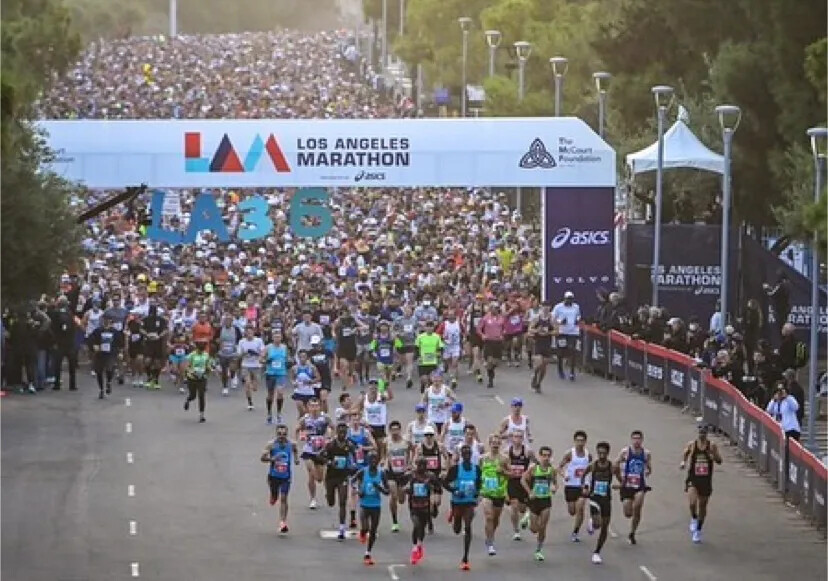
Ngeno clinched the third spot at the Eindhoven Marathon in the Netherlands last October, achieving a personal best of 2:07:26 and is set to lead the elite field in what promises to be a thrilling race.
Ngeno's compatriot, Moses Kiptoo Kurgat, arrives in Los Angeles boasting a personal best of 2:08:40, following his recent triumph at the 2022 Kuala Lumpur Marathon, where he clocked an impressive 2:11:05. The duo's presence adds an extra layer of excitement to the event, showcasing Kenya's dominance in long-distance running.
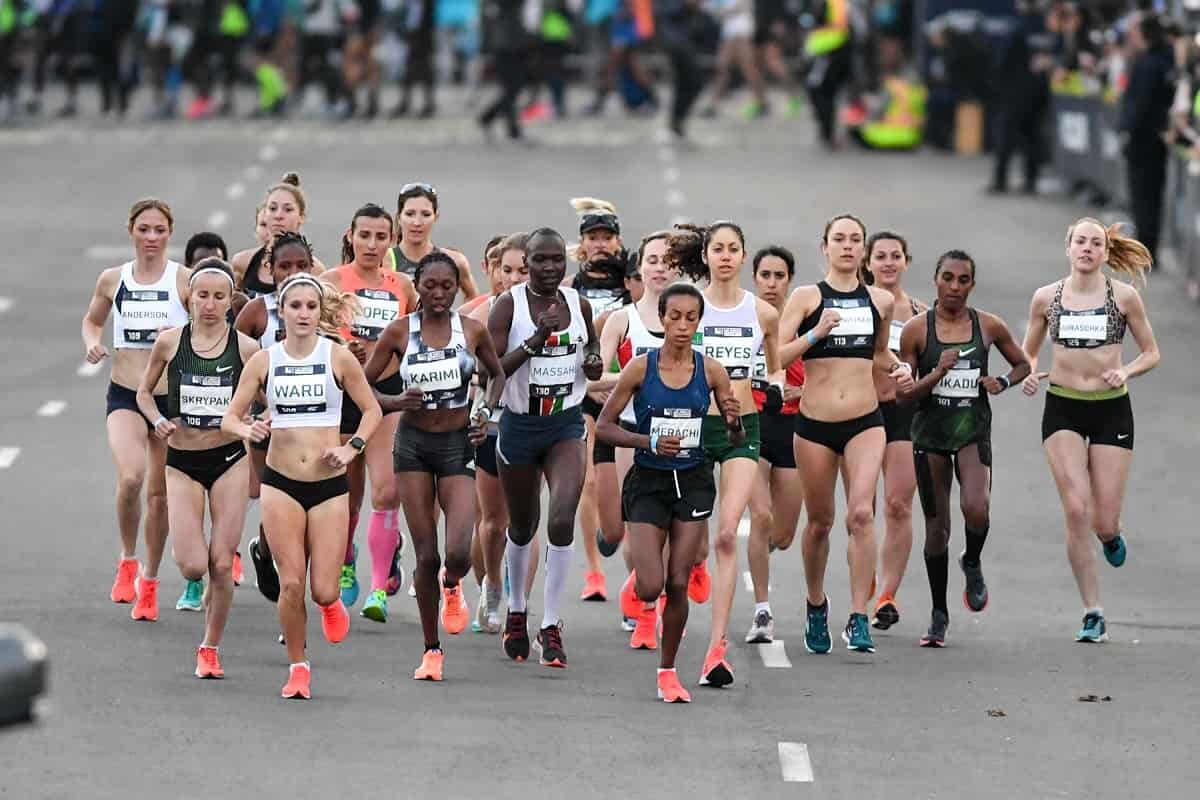
Eritrean runners Tsegay Tuemay and Tesfu Weldegebreal, who have been honing their skills in Flagstaff, Arizona, are also set to make their mark. Tuemay, with a personal best of 2:09:07, claimed victory at the McKirdy Micro Marathon in New York last October in a time of 2:11:04. Meanwhile, Weldegebreal, with a half marathon personal best of 62:48, is gearing up for his marathon debut.
Other contenders vying for the top spot include Cosmas Kiplimo from Kenya, boasting a 2:09:44 personal best and a third-place finish in the Geneva Marathon (2:10:44) in Switzerland last October. Sammy Rotich, a Kenyan who secured victory at the Austin Marathon (2:14:25) and achieved a personal best of 2:10:08 at Grandma's Marathon in 2022, will also be a force to be reckoned with. Ethiopia's Belay Tilahun Bezabh, winner of the 2019 NYC Half Marathon and with notable performances in Hamburg and Dalian Marathons, completes the formidable lineup.
Given the impressive credentials of these elite runners, the event organizers are optimistic about witnessing one of the fastest men's races in the history of the Los Angeles Marathon.
The current fastest time ever recorded in Los Angeles is Ethiopia's Markos Geneti's remarkable 2:06:35 effort in 2011 on the Stadium to Sea course. The Stadium to Stars route's course record is held by Ethiopia's Bayelign Teshager, who clocked 2:08:26 in 2020, setting the stage for an exciting showdown among these elite athletes.
(03/08/24) Views: 115Michezo Afrika
British journalist exonerated for alleged cheating at London Marathon
In one of the most high-profile cheating cases in recent years, British running journalist Kate Carter has been cleared of wrongdoing by England Athletics after facing accusations of cheating during the 2023 London Marathon and London Landmarks Half Marathon events.
Carter, a journalist and editor for Runner’s World UK, was under suspicion for allegedly entering a fake time at the London Marathon and course-cutting the London Landmarks Half Marathon last April. Marathon Investigation blogger Derek Murphy publicized the allegations, claiming there was no evidence Carter had run the entire London Marathon and that she may have used software to manually create GPS data based on an out-of-date course map. Murphy’s second allegation was that there was no record of her having completed the 10K to 20K section of the Landmarks event. Besides missing the timing mats, early race photos show Carter’s bib fully visible, compared to photos from later stages in the race, where her bib is folded, only revealing part of her number.
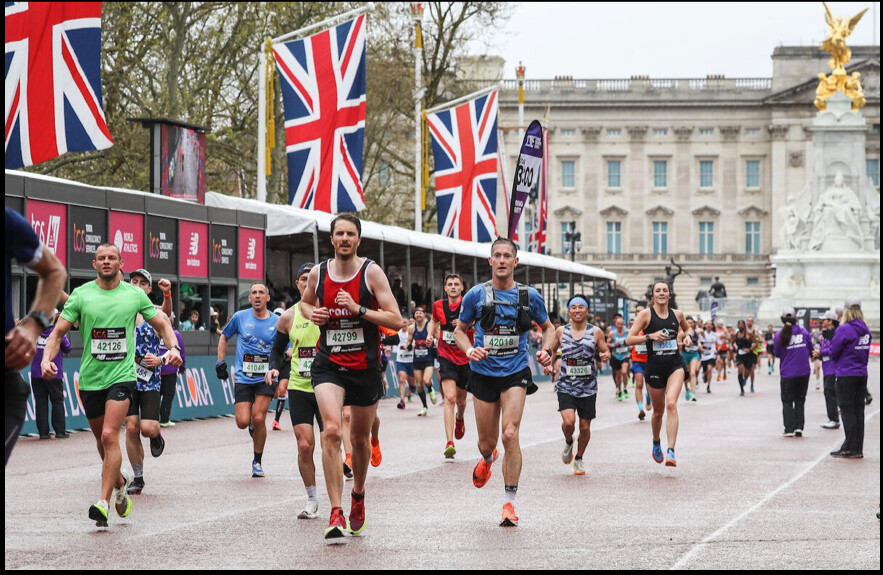
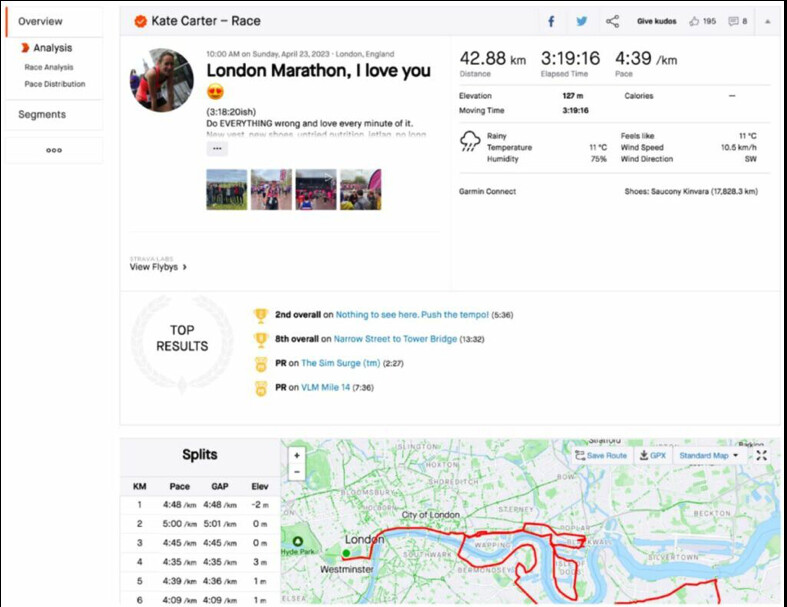
Carter denied the allegations, telling Athletics Weekly that she was not a cheat but just made some ill-considered decisions. Her defense was that, at the London Marathon, she decided not to run with a chip, as she felt she wasn’t in good shape and did not want an official time. However, she later decided to give herself a personal record on Strava, and used the app to draw a map of her run. Having later realized the map was inaccurate, she removed the post. At the London Landmarks Half Marathon, a race used by thousands of runners in preparation for the London Marathon, Carter says she had to leave the course because she had urinated on herself. She did not rejoin the race at the same point (which she claims was unintentional), and insists that her GPS watch had died.
England Athletics (EA), the governing body of all road races in the country, launched an investigation and found there was “no intention to deceive and no attempt to benefit from the results.” A spokesperson from EA told Athletics Weekly that every effort was made to arrive at the correct outcome.
“Investigators found that I did run last year’s London Marathon without a timing chip, as I have always said,” Carter said. “To reiterate: I am not a cheat. And I have never cheated. I ran without a timing chip as I thought I would perform poorly, and I didn’t get a time. I then attempted to draw the run on my Strava so my miles counted towards the monthly total.”
“At the London Landmarks race, I stepped off the course after wetting myself in a bid to find a bin and clean myself up. This was a hugely embarrassing moment, and I accept that I then inadvertently re-entered the race in a different spot. However, England Athletics have now told me that, after speaking to organizers who have also provided details of my timing chip, they have ruled that: ‘This was not a deliberate act of deception, and you did not gain any benefit or win anything as a result’,” Carter reveals.
Murphy told Canadian Running in a statement that he believes England Athletics’ investigation did not dispute any of the facts from his original article. “The findings pertain to her intent to deceive and whether her actions rose to the level of ‘serious misconduct’,” he says. “I do understand that they probably don’t want to open the door to receiving complaints on every mid-packer that cuts the course or doctors their Strava. I am not sure how they would conclude that there is no intent [from Carter] to deceive based on the verifiable and admitted facts.”
Carter, 47, is known for her achievements as an age grouper and for holding the world record for the fastest marathon by a woman in an animal costume (3:48:32). She told Athletics Weekly that the entire process has been damaging to her mental and physical health, and her reputation. “Running was a big part of my identity,” said Carter. Having been cleared, I really hope to find that joy again.”
The London Landmarks Half Marathon has offered Carter an invitation to run this year’s race.
(03/09/24) Views: 112Running Magazine
Conquer Your Longest Distance Yet With These 9 Tips
Ultrarunners and coaches share their best advice for building mileage without getting injured.
Whether you want to progress from a 5K to a half marathon or a marathon to an ultra, a few general rules on how to run longer can help you get there.

While building mileage and time on your feet is paramount, the key to doing it successfully involves patience and persistence. “As much as volume matters—volume is king—too much volume too soon can get you on the sidelines,” Bertrand Newson, RRCA-certified run coach and founder and team captain of Too Legit Fitness, based in San Jose, California, tells Runner’s World.
Follow these tips from Newson and other coaches and ultramarathoners to successfully increase your mileage, avoid injuries, and crush your longest distances.
1. Build a Base, Then Keep It Consistent
“I steadily built up to running 250-mile races over many years, but I started by running one mile at a time,” says Sarah Ostaszewski, pro ultrarunner with Tailwind Nutrition who won the 2023 Ouray 100-Mile Endurance Run. “Build a strong base and try to keep a consistent running routine, so then adding a little extra here and there won’t seem so daunting.”
Base training typically requires about four to eight weeks (before following a race training schedule) to strengthen your cardiovascular system and your muscles, but the longer you can regularly run and set a foundation, the better. Your base work should involve mostly easy runs, low mileage, and maybe low-key speedwork (depending on your fitness level), like ending a run with strides. This part of your training is all about consistency, rather than actually building mileage.
Ultrarunner Mirna Valerio stays consistent by focusing on time on her feet, rather than distance. “This has been mentally freeing,” the author of A Beautiful Work in Progress tells Runner’s World.
“I have a standing appointment with my treadmill a couple times a week,” says Valerio, who will aim to run a minimum of 12 hours a day over six days at the Lululemon Further event, an ultramarathon for women in March. “I just get it done, which incidentally is one of my mantras.”
2. Find Your Best Approach to Building Volume
If you’re new to running and want to run longer, add another day of a short, easy run to your schedule, suggests Stefanie Flippin, an ultrarunner, Lululemon ambassador, and doctor of podiatric medicine, who has earned a first-place finish at several 100-milers.
Maxed out on available days of the week? Add to your long-run mileage, which is what Leah Yingling, ultrarunner and biochemical engineer who will see how far she can run in 24 hours at Lululemon Further, does first when aiming to build volume. The general rule is to increase your weekly mileage by about 10 percent each week, adding to that long run. For example, if you currently clock 17 miles per week with three four-mile runs during the week and a long run of five miles on the weekend, you would keep your midweek mileage the same, but kick up your long run to about seven miles next weekend.
Yingling, and many other pros, also do two runs a day. While this won’t work for everyone, if you don’t have a significant single block of time, clocking some miles in the morning and again in the evening and resting between can help you clock more mileage. One must-do to make it work: Tame the intensity on at least one of those runs.
Charlie Lawrence, 50-mile world record holder, views his second run of the day as a sort of active recovery. He often goes for double digits in the mornings, then runs for about four miles (at minimum) in the evening, keeping the effort light.
No matter what, testing out strategies to see what works for your schedule is the best way to run longer. “That might be adding a walk a few days a week in addition to your daily runs, or maybe you’re adding back-to-back long runs,” says Yingling. “Whatever you do, find something that is sustainable.”
3. Follow a Progressive Training Plan
A good training plan will slowly build mileage to decrease your risk of getting sidelined, as research shows taking on too many miles too soon is one of the biggest risk factors for overuse injuries.
When choosing your training plan, you have to be realistic about the time you have to build up to the distance you want to conquer—and where you’re at now, says Newson. For example, if you have your sights set on a half or full marathon, think about what you can comfortably run today. Then, following the loose rule of adding 10 percent more miles each week, how long do you need to train? If you currently run five miles without stopping and feel good after, and can comfortably clock 12 miles per week, you can probably conquer a 10-week half marathon plan.
Another important factor to look for when it comes to mileage on a training plan: recovery weeks. Newson explains you’ll typically see this as three weeks of building, then a week in which you back off mileage a little to give your body time to recover and actually make gains from all the work you put into your plan. This will also keep your body strong and help you sidestep aches and pains, he adds.
4. Keep Easy Runs Easy
You’ve heard it before but it’s especially true when trying to run longer: Don’t overdo your low-effort days.
“It’s important for me to always run my easy runs, short or long, at a conversational, aerobic rate of perceived exertion. This means that I can easily chat with a training partner for the duration of my runs without becoming out of breath,” Flippin says, who also clocks her heart rate to make sure she’s in an easy zone.
Don’t worry about what shows on Strava, either. “I think a lot of runners run their easy runs too hard and that is because of ego and they don’t want people to think they are slow,” says Devon Yanko, ultrarunner who’s placed first in several 100-mile races and will aim to conquer her longest distance over six days at the Lululemon Further event. “I delight in the idea that people may look at my Strava and think I am too slow, because on race day that won’t be the case!”
More generally, applying the 80/20 rule to your training overall can also help you record more low-intensity runs, Newson says, as it means 80 percent of your workouts should happen at a low intensity, and 20 percent at a hard effort.
It’s these easy runs that will help keep you running consistently—the key that unlocks higher mileage. “A B+ average of consistent runs, strength work, and recovery measures stacked over weeks, months, and years will always trump sporadic A+ weeks followed by a total drop-off,” Flippin says.
5. Master the Long Run
For most people, the long run will make up the bulk of your weekly mileage, but it doesn’t just help you clock more time on your feet. It also teaches you mental stamina, how to deal with fatigue, and it can help you get comfortable with being uncomfortable. With years of practice, this is what many pros say pulls them through farther distances.
Even though Lawrence can deal with being uncomfortable for long periods of time, he still turns to mind games to mentally check off miles. For example, he often breaks a race down into small, manageable chunks, often focusing on the next fuel stop (typically about every four miles) as a check point. If he’s struggling to get to the next four-mile marker, he may tell himself he’ll feel better in 10 to 15 minutes and checks in again then.
In addition to breaking your long run up into segments, Newson also suggests dedicating each mile to someone else, which takes it outside of yourself and gives you another reason to keep going, and says to focus on the mile you’re in, simply putting one foot in front of the other.
Finally, the long run is the perfect time to practice your fueling and fluid intake, Newson says, considering you need energy to clock longer miles. Aim to take in carbs when going for 90 minutes or longer, and go for about 30 to 60 grams per hour after the first hour.
6. Schedule a Few Harder Workouts
To build endurance, you want to run long, but you can also add intervals and speed work into your schedule.
Lawrence gets on the track for VO2 max-specific workouts at least once a week. VO2 max is the amount of oxygen you can take in while running and is a major marker of fitness—the better this metric, the easier running will feel, which will help you go longer with less effort. Focusing on VO2 max intensities on runs means going for about 90 to 100 percent of your max heart rate or about 5K pace, and it could involve intervals like 400-meter repeats.
You could also focus on lactate threshold training. Your lactate threshold is the point at which your body produces lactate at a rate you can no longer clear, leading to fatigue. To help you prolong that side effect—helping you go faster for longer—practice running at your threshold pace. (Here’s how to calculate your running speed at lactate threshold).
To do this, Ostaszewski prefers longer interval workouts with work periods ranging from six to 10 minutes near aerobic threshold. But tempo runs at your threshold speed are also smart.
7. Supplement Your Runs With Mobility and Strength
Before you jump into high mileage, you need a solid warmup. Lawrence has been doing the same activation drills before runs for a long time. He starts with foam rolling most of the lower body, then does a series of exercises, like:
Leg swings
Down dog to lunge rotation
Ankle mobility moves
Banded work, like glute bridges
This go-to routine wakes him up and gets him in run mode, even when he’s not feeling it.
Cross-training workouts are also key. Valerio mixes strength training, mobility workouts, Pilates, and rowing into her training schedule, which she says helps her avoid overuse injuries. Meanwhile, Flippin points to strength training in particular as crucial to running longer. She suggests starting with one day a week to build consistency, then adding on days from there.
Lawrence focuses specifically on doing core workouts every day (one of his go-to moves: the ab roll out), along with dedicated gym time for lifting, in which he conquers moves like hex bar deadlifts.
8. Make Recovery a Priority
Many pro runners turn to a solid nutrition practice to jumpstart recovery and fuel future performances. “I ensure I’m always getting in carbohydrates and protein within 30 minutes of finishing a key workout or long run,” Yingling says.
Finding time for other recovery practices, like mobility work, foam rolling, even meditating, can also support your training and get you prepped for the next round of mileage, Newson says. Full rest days are also important, especially if you’re feeling any aches and pains.
And you can’t forget about sleep for recovery—striving for at least the recommended seven to nine hours—especially for those looking to push their mileage.
9. Don’t Rely on Motivation Alone
Running your longest distance takes dedication and determination, but don’t expect to feel motivated every day. “People often wait to do things until they are motivated, when instead, they should have been focused on completing their plan or working toward their goal,” says Yanko. “I don’t jump out of bed every morning peppy and excited to run, but I am committed to doing the work and thus, I simply get the work done.”
Yanko also suggests tapping into curiosity to keep you going longer. “That is, instead of being intimidated by a workout or long run, I allow myself the opportunity to be curious about what might happen if I simply begin the session,” she says. “I do not believe that one workout or one long run ‘proves’ anything about my fitness or ability to race, so having curiosity means I can get into a session and allow it to unfold with confidence that if I just continue to show up and do the work, I will build my fitness brick by brick.”
Newson also suggests a running group to keep you accountable and consistent, and to elevate the fun of your workouts.
“On the mental side, I always try to see the big picture and remember that all the miles I’m running are for fun and for my own personal enjoyment,” Ostaszewski adds. “I’m always aiming to enjoy the process and recognize growth in the journey.”
(03/10/24) Views: 111Runner’s World
Why Benson Kipruto is Kenya’s best bet for marathon gold at Paris 2024 Olympics
Pulse Sports details the reasons that make 2024 Tokyo Marathon champion Benson Kiptruto Kenya’s best bet for marathon gold at the Paris Olympics.
Tokyo Marathon champion Benson Kipruto appears to be the early favorite to win Kenya gold at the Paris Olympics given his recent form.
Kipruto is still basking in the glory of his win in Tokyo last week when he clocked 2:02:16 to break the course record ahead of countrymen Timothy Kiplagat (2:02:55) and Vincent Ngetich (2:04:18).
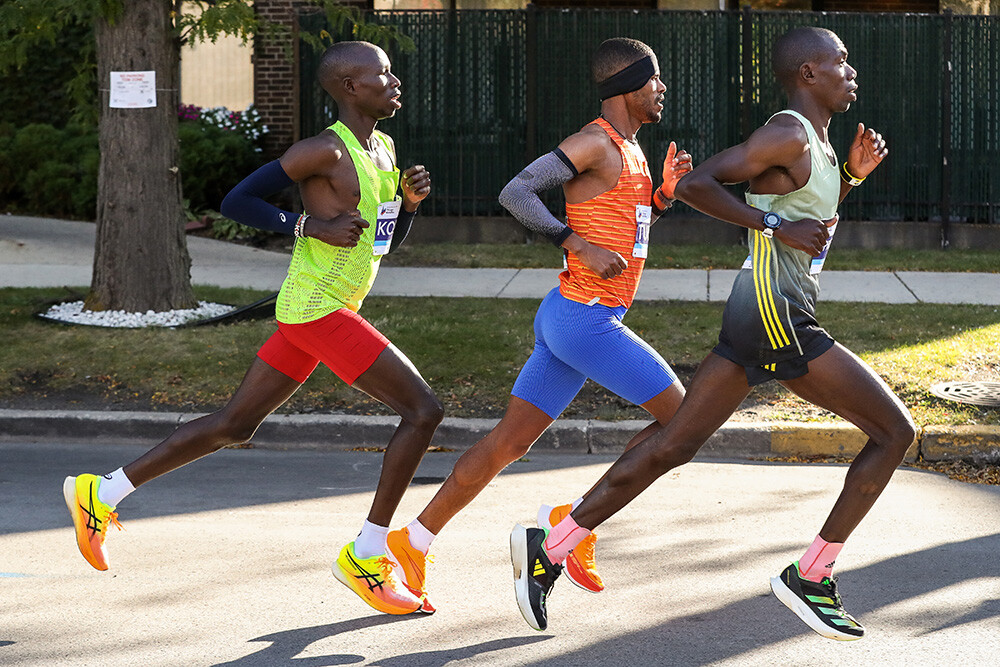
That was Kipruto’s fourth win in his last seven marathons, having also won in Prague and Boston in 2021 and Chicago in 2022. During that period, the 32-year-old has also not finished outside the top three, third in Boston in 2022 and 2023, as well as a second place in Chicago last year.
Looking at the provisional Team Kenya marathon team to Paris Olympics selected last December, only Kelvin Kiptum had better numbers, but the world marathon record holder is now deceased, which leaves Kipruto with a head start.

Kenya’s provisional squad of 10 had Kipruto, Kiptum, two-time Olympics champion Eliud Kipchoge, Ngetich, Timothy Kiplagat, Bernard Koech, two-time New York Marathon champion Geoffrey Kamworor, Cyprian Kotut, 2022 London Marathon champion Amos Kipruto and Titus Kipruto.
With Athletics Kenya (AK) making their selection based on World Athletics Road to Paris Marathon Rankings, two-time Boston Marathon champion Evans Chebet and Alexander Mutiso, third in Valencia in 2:03:29 on his debut in 2022, winner in Prague last year (2:05:09), before second place in Valencia 2023 (2:03:11) did not make the team.
Mutiso had not run Valencia when the team was unveiled while Chebet has been very consistent. After his marathon debut in 2013 in Seoul (2:11:26), Chebet has managed top four placings in all 15 marathons he has finished, including six wins and six runner-up finishes.
He won in Boston and New York in 2022 before defending his Boston title and he will be back again in April in a bid to make it three straight wins.
Athletics Kenya has yet to indicate if there will be alterations to the team in light of Kiptum’s demise, which could give Chebet or Mutiso a ticket to the Olympics, if they do well in Boston and London respectively next month.
If AK sticks to the original list, then Kipruto will be seen as the hot favourite given the recent form of defending champion Kipchoge.
Kipchoge finished a disappointing 10th in Tokyo after clocking 2:06:50, having come in as favorite following his win in Berlin last year (2:02:42) and the fact that he also won in the Japanese capital in 2021 (2:02:40).
However, his sixth place in Boston last year (2:09:23), which was blamed on the lack of pacemakers and the hilly course, and the latest in Tokyo prove that he is human after all, hence the need to look beyond him for gold in Paris.
(03/11/24) Views: 103Joel Omotto


